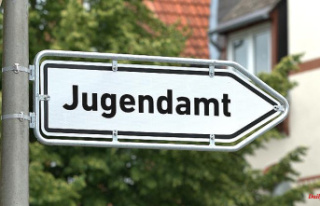It's starting to burn in Europe earlier than ever this year. As early as March, the first major fires destroyed extensive forest areas. The prolonged drought and high temperatures create devastating conditions for an extraordinary year of forest fires almost everywhere in Europe.
Meter-high flames that violently eat their way through forests, desperate people who have to be evacuated from their homes, villages and towns, firefighters, helicopters and fire engines who in many places are fighting the flames in vain: Europe is burning like it hasn't been for a long time. Heat combined with long periods of drought - the climate this year creates the perfect conditions for fires. There have never been so many fires so early in the 27 EU countries. And the second half of the wildfire season continues for months.
In Spain, Romania, Austria, Hungary and Slovakia, more area has already burned than ever before in a single calendar year. This comes from data from the European Forest Fire Information System (EFFIS). However, the problem does not only affect these four states. All of Europe is facing an exceptionally intense wildfire season. Overall, forest fires have already devastated more areas across Europe this year than in all of 2021. Germany has also been severely affected: eleven times more area has been destroyed by forest fires here than on average in recent years. "Both in Europe and in Germany we are already on record course. The burnt area is extremely large compared to the last 15 years," says Michael Ewald, forest fire expert from the Karlsruhe Institute of Technology (KIT).
Not only the size of the burnt area is extraordinary this year. The development over time is also striking: in Austria, for example, the first two large forest fires broke out in March. The situation was similar in Hungary, Slovakia and Romania: There, too, the fire started unusually early in March this year.
A look at the data shows that in only six EU countries has less area been devastated than the long-term average from 2006 to 2021. The other 21 countries report above-average burned areas. For example in Spain: The Spanish Canary Island of Tenerife experienced an extensive forest fire in 2022, numerous residents had to be brought to safety - 150 firefighters were deployed there to bring the flames under control. The 2150 hectares destroyed in the Tenerife fire contribute to the exceptional Spanish wildfire season. By July 16, almost six times as much area had been destroyed by forest fires as the average for the past 17 years.
The situation is similar in France, where 39,812 hectares have already burned. The average since 2006 is 5658 hectares. That's a sixfold increase.
But even Germany, which is traditionally not so badly affected by forest fires, is quickly approaching the figures from the record year 2018, when 97 forest fires destroyed more than 5000 hectares. This year, the fires are quickly reaching this number, mainly due to fires in Brandenburg, the area already burned has increased to more than 3000 hectares. This is already eleven times the long-term average.
The forest fire expert Ewald attributes the unusual fire year to two factors, both of which are favored by climate change. For one, "temperature affects the frequency of wildfires," he says. If the temperature rises, the vegetation dries out faster - and is more easily flammable.
As a result of climate change, the global annual mean temperature is already 1.5 degrees higher than the average temperature of 1951-1980. In Germany, too, the number of hot days is increasing rapidly. And although heat alone does not start a fire, there is a connection between hot days and forest fires. In the major forest fire years of 2018 and 2019, there were 20.4 and 17 hot days in Germany - for comparison: in 2021, in which there were almost no forest fires, there were only 4.6 hot days in the Federal Republic.
This year, the Association of the German Insurance Industry measured 12 hot days by the end of June. The heat wave in July has not yet been taken into account. The year 2022 is already an above-average hot year: "With 12 days over 30 degrees, we are already above the annual average of 11.1 days over the past ten years," said Jörg Asmussen, General Manager of the German Insurance Association (GDV).
The second factor that is important for wildfires are extreme events, says Ewald. Extreme heat or drought periods - either because it is hot for a very long time or because the temperature rises sharply in a short time - favor the framework conditions for forest fires. While northern Europe was hit by a flood of the century last summer, a drought of the century could be decisive this year. A large part of the area of the European Union is threatened by drought, the EU Commission announced. At the end of June, 46 percent had a drought warning level of two, and 11 percent of the area even had the highest of three warning levels.
Drought alone does not necessarily lead to forest fires. But if the forest dries out over a longer period of time, perfect fire fodder is created. A small spark can then quickly trigger a large-scale forest fire. And the longer the drought lasts, the more rain is needed to reduce the risk of fire again. "If the vegetation is very dry, then a day's precipitation is like a drop in the ocean," explains Ewald.
Everything indicates that both fire factors - the heat and extreme weather events - will increase due to climate change. According to the Intergovernmental Panel on Climate Change (IPCC), heat waves have become more frequent and intense in most regions since the 1950s. With each degree of additional warming, these extreme weather events are also likely to increase.
However, the global warming of 1.2 degrees assumed by the IPCC is already making itself felt in Germany. 2018, 2019 and now 2022 are considered bad forest fire years in the Federal Republic - i.e. three of the past five years. But Ewald is cautious when it comes to observing an upward trend in forest fires. After all, there were some big forest fire years in Germany in the 1970s. But the accumulation, which can now be observed within a very short time, is extraordinary, says the fire expert.
Some scientists warn that the current accumulation of record wildfire years in a short space of time is just the beginning. "If we look back at the current fire season in a decade or two, it will likely appear mild in comparison," Victor Resco de Dios, professor of forestry engineering at Spain's University of Lleida, told Reuters.












